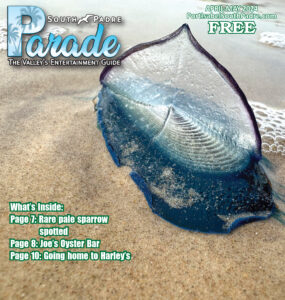By ESTEVAN MEDRANO
Port Isabel-South Padre Press
press@portisabelsouthpadre.com
January 29, 2015
Ideally, speed bumps are used as a means to reduce traffic volume and prevent reckless driving on streets with high pedestrian traffic like residential neighborhoods and parking lots. For the most part, statistics show that speed bumps and other traffic calming devices such as speed cushions do serve their purpose. There is, however, a growing concern that they could have more negative impacts than positive ones.
One Laguna Madre resident, Ralph Ayers, is concerned with the speed bumps being implemented in his neighborhood. His concerns stem from his 19 years of experience as a volunteer fireman for the Laguna Vista Fire Department.
“They recently paved our street and installed nine speed bumps in a street that’s nine-tenths of a mile long, which I find rather excessive,” he said. “I have some serious concerns about speed bumps. During my tenure there [at the fire department] we generally opposed speed bumps. My house doesn’t have any cement borders around so I also have a lot of dead grass where people have driven around speed bumps and they’re wrecking my lawn,” he said.
He went on to say he believes city officials install them thinking they will be a benefit for residents who have children, but remarked that streets are meant to be used for vehicles, not as playgrounds.
“If I have reason to believe that if I needed an emergency vehicle for my wife or my house was on fire, and emergency vehicles were slowed to get to my house because of all those speed bumps I’m going to sue that town because I don’t think they’ve seriously looked into it,” he said. “Nine is ridiculous. I’m not an angry citizen, but I see a concern that needs to be addressed,” he said.
The Laguna Vista road Ayers is referring to in on Palm Boulevard, which previously had only three speed bumps, but now has approximately one per 0.1 miles in that stretch. That’s similar to one and a half football fields in length. Mesquite Drive, another road in Laguna Vista, is 0.7 miles long and has seven speed bumps. Beach Boulevard, another residential area which is over a mile long, has no speed bumps.
Speed bumps are typically made of asphalt or rubber and there is statistical confliction regarding their benefits. The biggest concern is that they stall first responders from arriving to a scene and can put them in danger as they attempt to arrive as quickly as possible. In addition, traffic calming devices increase a vehicle’s use of fuel and can gradually wear down an emergency vehicle’s components, such as tires and shock absorbers.
Ayers isn’t alone in worrying about the detrimental impact speed calming devices can have for first responders. The city of Eugene, Oregon, in conjunction with the National Fire Academy, conducted research on the topic in 2000. After conducting time trials they discovered that emergency response vehicles were delayed by more than three and a half seconds per speed bump. Similar time trials conducted in other cities across the country found the delays to be as long as 10 seconds per bump.
Other possible consequences include concerns that speed bumps, humps, or pavement roughness measures could negatively impact ambulance patients who can be more sensitive to vibrations, including cardiac arrest patients. The Eugene research cited a study conducted in Austin that hypothesized the city could lose up to 37 cardiac patients per year if emergency vehicles experienced an increase of 30 seconds or more to their response time. However, there was no quantifiable data available to validate that claim.
Smooth lanes with little traffic do open the possibility of drag racing and speeding through a residential area for convenience. One of the most common reasons a city decides to implement these devices is because of grievances from citizen concerns with lanes nearby their residence that regularly have neighbors or children crossing. Because of this, many residents feel their installment is more than justified knowing there has been physical measures taken by the city to ensure they are resting next to streets that appropriately ensure safe driving.
“A citizen has to submit a request and I will consider it and we’ll review the merits. We’ll see if it’s needed and from there on we decide whether we should put one or not,” said Laguna Vista City Manager Rolando Vela. “The whole idea of the placement of speed bumps is an effort to maintain the character of a neighborhood. Neighborhoods are residential areas. People live in those areas and they expect to be able to walk outside in the street without fear of a car driving fast,” he said.
He went on to say the devices are installed specifically to slow down traffic in residential areas, much to the approval of the community. “There are a lot of citizens that have been excited with the speed bumps installed,” he said.
Want the whole story? Pick up a copy of the Port Isabel-South Padre Press, or subscribe to our E-Edition by clicking here.


Comments